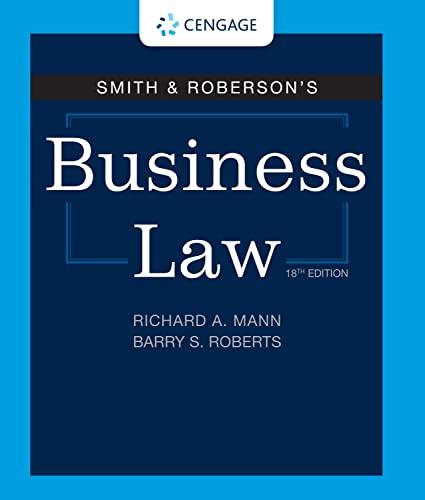Question
Discussion Board:Chapter 9: Processing and Sentencing of Female Offenders For this Discussion Board Assignment, 1) Discuss two legal factors that affect women's processing and sentencing
Discussion Board:Chapter 9: Processing and Sentencing of Female Offenders
For this Discussion Board Assignment,
1) Discuss two legal factors that affect women's processing and sentencing in the system;
2) Discuss two extralegal factors that affect women's processing and sentencing in the system
Stage in the Criminal Justice System
- There are two hypotheses offered to explained different outcomes of men and women in the CJ system:
- Chivalry
- Evil woman
- The chivalry hypothesis suggests women receive preferential treatment by the system.
- While the evil woman hypothesis states that women are punished more harshly because they have violated societal norms.
- Chivalry can occur in different stages of the criminal just system.
- Arrest is typically the first stage examined in research.
- Despite society's preconceived notions, women don't always experience preferential treatment.
- Studies at various stages of decision-making (charging decisions, pre-trial release, and sentencing) show women are more likely to receive leniency than men, although some research counters this.
- Primary explanations for leniency: gender differences in criminal histories, offense severity.
Race Effects and the Processing of Female Offenders
- Women of color have been shown to be punished more harshly than White women.
- Socioeconomic status also interacts with race to affect outcomes.
- Scarcity of research on the criminal justice processing outcomes of other racial and ethnic groups (e.g., Latinas, Asian Americans, Native Americans, and Pacific Islanders).
The War on Drugs and Its Effects for Women
- The passage of the Anti-Drug Abuse Act has contributed to an increase in both males and females entering the criminal justice system.
- Mandatory minimum sentencing changed how drug offenders were processed and sentenced.
- Prior to the War on Drugs, most drug convictions were handled by community corrections and didn't result in incarceration.
The Effects of Extralegal Factors on Sentencing Women
- There is still debate on whether chivalry impacts sentencing for women.
- The are two elements of sentencing decisions to consider:
- Legal factors
- Extralegal factors
- Two key legal factors that can impact a woman's sentence are criminal history and severity of the offense.
- Some extralegal factors can include legal representation, ties to the community, and whether or not the woman is a mother/caregiver of children.
The Effects of Sentencing Guidelines on Judicial Decisions
- There was a shift in correctional philosophy during the 1970s away from rehabilitation towards retribution, incapacitation, and deterrence.
- Prior to this reform, most women were granted probation.
- Judges used to have a lot of discretion in sentencing.
- Sentencing guidelines restricted that discretion.
International Perspectives on the Processing of Female Offenders
- In other countries, women offenders receive both harsher and more leniently treatment than men depending on legal and extralegal factors.
- Some research shows China views women as subordinates and tends to treat women more leniently.
- Women of South Korea typically received shorter sentences than men, although those who had a prior history and/or detained at pretrial received harsher sentences.
- Women in Australia and Finland were not found to benefit from preferential treatment.
Step by Step Solution
There are 3 Steps involved in it
Step: 1

Get Instant Access to Expert-Tailored Solutions
See step-by-step solutions with expert insights and AI powered tools for academic success
Step: 2

Step: 3

Ace Your Homework with AI
Get the answers you need in no time with our AI-driven, step-by-step assistance
Get Started


